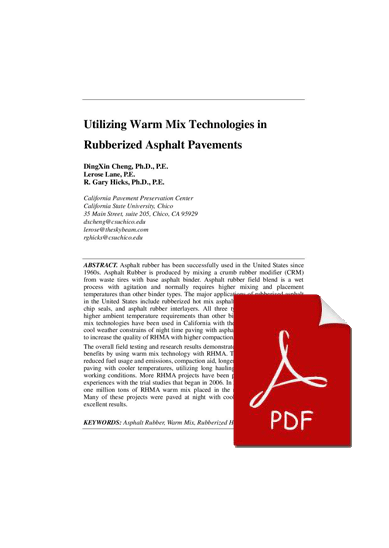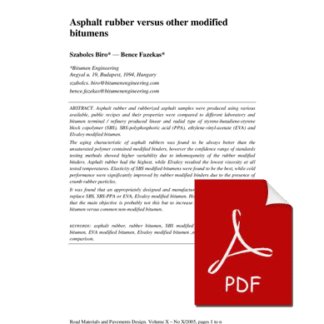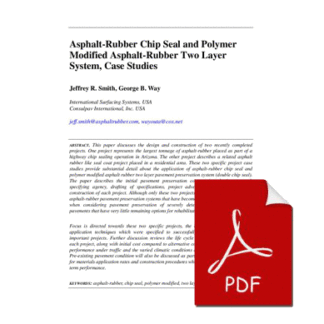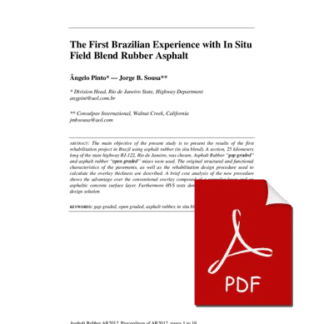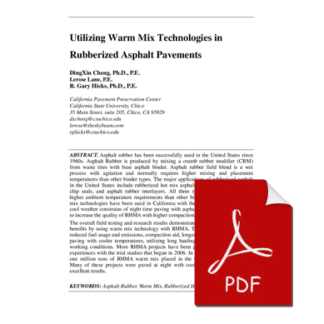Description
Asphalt rubber has been successfully used in the United States since 1960s. Asphalt Rubber is produced by mixing a crumb rubber modifier (CRM) from waste tires with base asphalt binder. Asphalt rubber field blend is a wet process with agitation and normally requires higher mixing and placement temperatures than other binder types. The major applications of rubberized asphalt in the United States include rubberized hot mix asphalt (RHMA), asphalt rubber chip seals, and asphalt rubber interlayers. All three types of applications have higher ambient temperature requirements than other binder types. Various warm mix technologies have been used in California with these products to reduce the cool weather constrains of night time paving with asphalt rubber applications, and to increase the quality of RHMA with higher compaction.
The overall field testing and research results demonstrate there are a wide range of benefits by using warm mix technology with RHMA. These benefits may include reduced fuel usage and emissions, compaction aid, longer paving season, night time paving with cooler temperatures, utilizing long hauling distances, and improved working conditions. More RHMA projects have been placed after the successful experiences with the trial studies that began in 2006. In 2011, there was more than one million tons of RHMA warm mix placed in the northern California alone. Many of these projects were paved at night with cooler temperatures and with
excellent results.

